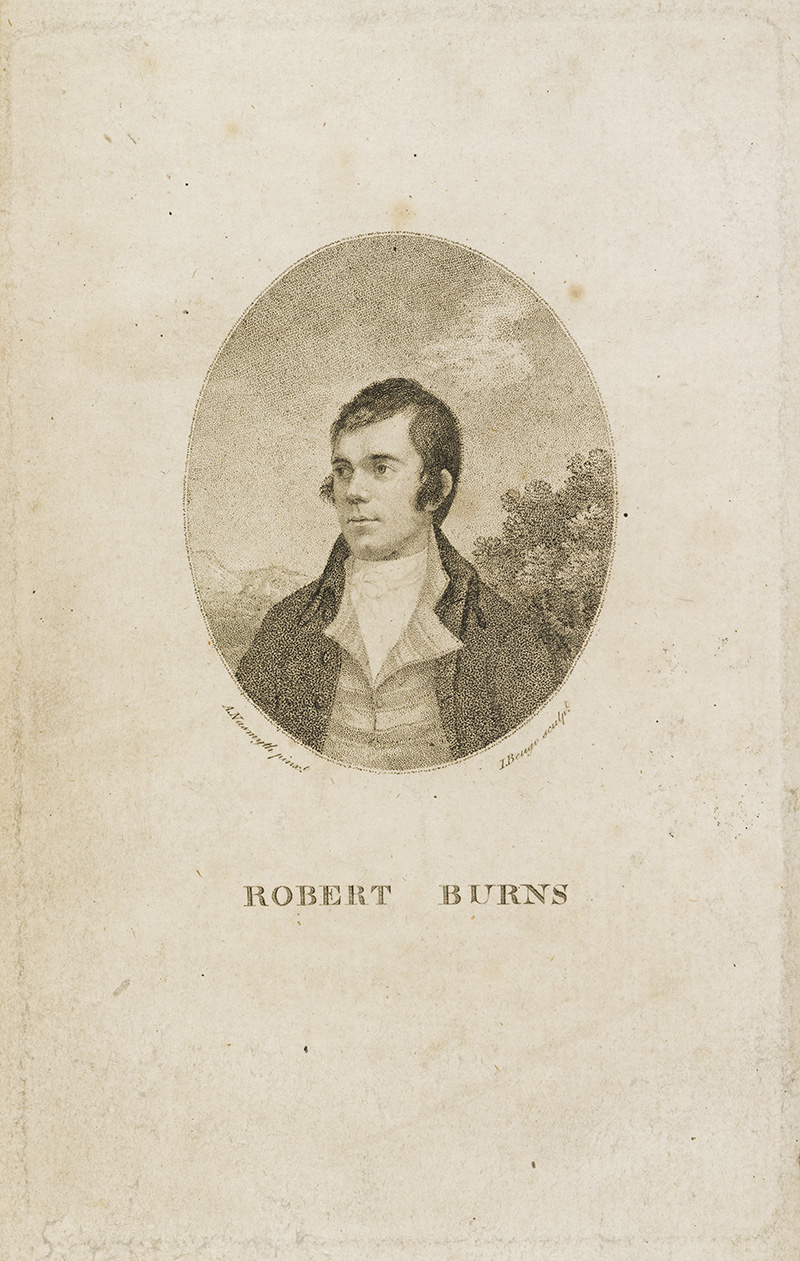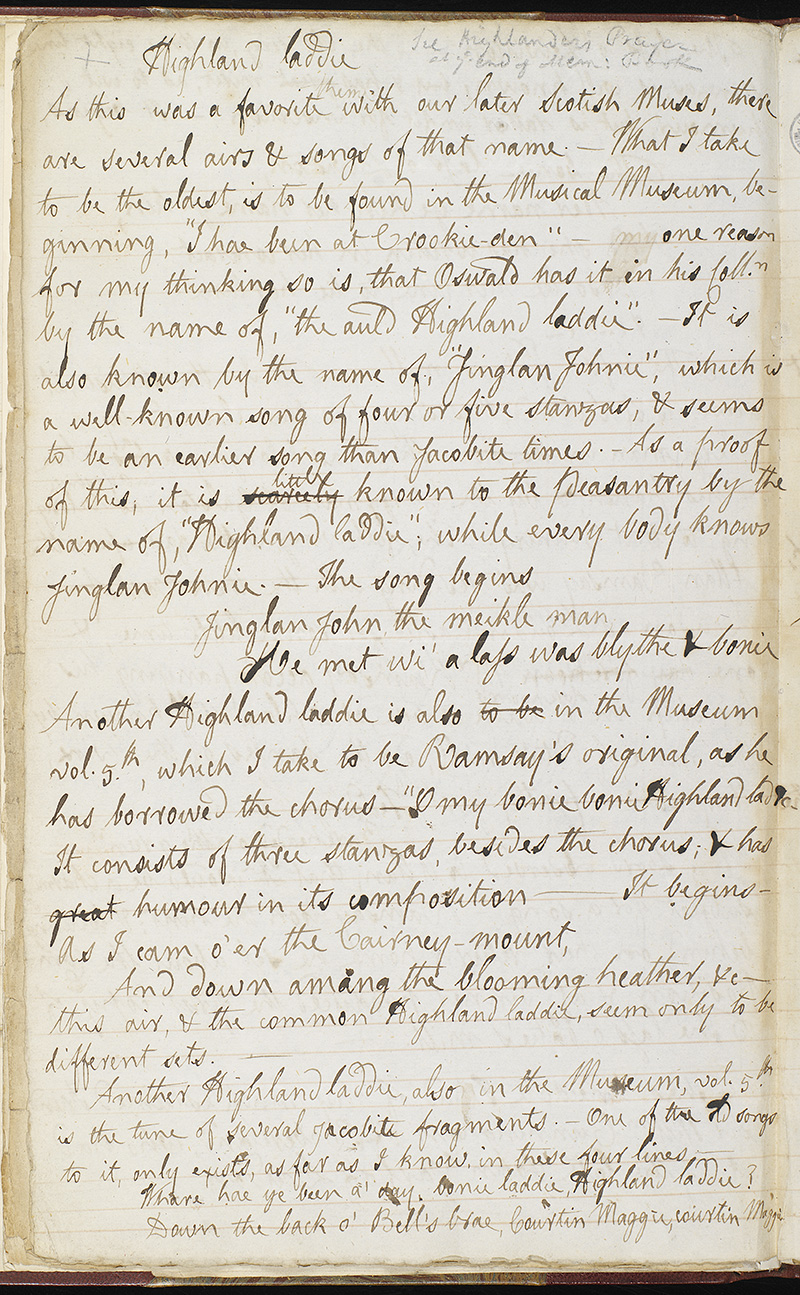
The most important manuscript collection at the University of Edinburgh has long been acknowledged to be the Laing Collection. This treasure trove was donated to the University of Edinburgh in 1878 by David Laing (1793-1878) and contains a startlingly vast array of texts and artefacts. To gloss this diversity only briefly, the University’s description of the Laing collection attests that one can find more than 100 Western medieval manuscript books, a 9th-century Koran, over 3000 charters, manuscript poems, texts, and letters written by Robert Burns (1759-1796), the lovely illustrated “Album Amicorum” (book of friends) by Michael Van Meer (?-1653), and poetry by Elizabeth Melville (1582-1640). Even the handlist for the collection is itself an archival artefact of sorts, having been drawn up in 1878 at the time of the bequest and bearing traces of additions and corrections made over the years since.
As important as the Laing collection is though, I’ll admit that until a couple of months ago, I didn’t know much about it and I certainly hadn’t spent any time delving into what it has to offer. I’m an English literature PhD here at the University of Edinburgh and my research focuses on archives, digital humanities, and, in particular, the study of idiosyncratic texts, like concrete poetry and scrapbooks. I like that these works challenge traditional literary classifications and give some pause when users must decide how to read them, digitise them, or otherwise interpret them. These interests led me to volunteer with the DIU, where I have been working to enrich the descriptive metadata of digitised items from the University’s Special Collections and Library holdings. This is also what finally led me to the Laing collection.
While the majority of the Laing collection is accessible only in person, there are nonetheless over 1400 digital images of various manuscripts and documents from the collection, including images of the documents written in Burns’ hand. When asked what images I would like to focus on for my volunteer work, this digital subset of the Laing collection drew me in right away. As a literature student, it is perhaps unsurprising that within this digital subset, I also decided to start with the pieces relevant to Burns.
Burns is one of Scotland’s best-known and best-loved poets, having written songs and poems in both Scots and English, as well as being a great collector and recorder of traditional Scottish folk songs. To see the impact that the Laing Collection has had on the study of Burns, one need only turn to twelve folio pages in the hand of Robert Burns that have been fully digitised (Shelfmark: La.II.210 (9), Holograph Notes on Scottish Songs).

These important pages were brought to prominence in 1922 by Davidson Cook, who transcribed and published them as Annotations of Scottish Songs by Burns: An Essential Supplement to Cromek and Dick. Davidson’s title refers to Robert H. Cromek’s The Reliques of Robert Burns: Consisting of Original Letters, Poems, and Critical Observations (1808) and J. C. Dick’s Notes on Scottish Song by Robert Burns (1908), both books concerned with Burns’ critical discussion of folk songs that were written before the rediscovery of the folio pages. Cook was therefore able to amend and expand the existing works through these pages.
Another significant document related to Burns in the Laing collection is a scrapbook-style page (Shelfmark: La.II.210, Collections of Poems and Letters, f.22r) that focuses on an Excise Paper written by Robert Burns in 1794. This fascinating digitised page provides a glimpse into Burns’ life as an officer of Excise, while also comprising a material record of some of the hands that the paper passed through before arriving at the University of Edinburgh.

Written in Burns’ hand, the paper reads “Malt 87th year, 1794. Dumfries Colln. Do. District. Do. 1st Division. 8th Round Voucher. Including 13th May and 24th June. Q.n.ty. 240 Q.l.ty. Best Floor £ S.D. 660”. The Paper is signed by John Mitchell, Alexander Findlater, and Robert Burns. Next to Burns’ letter, there has been penned an 1885 letter from Catherine Murray, who received the Burns paper from her father and is writing to give it to Mr. James Lyle. Underneath Murray’s letter, Lyle has added a signed note stating that he took ownership of the paper. To the right of Burn’s writing on the Paper, several other pieces of information have been added. Lyle has pencilled in a note praising Mr. Findlater’s character and referencing correspondence that exists between Burns and Findlater. Lyle has also pasted in a newspaper clipping of Catherine Murray’s obituary in 1908, which discusses both her and her late father. Lyle notes below the clipping that he knew “Mr. Murray very well”. Below this obituary, a newspaper clipping titled “Relic of Burns: Interesting Document in Edinburgh University” has been pasted in. The article details Lyle’s donation of the Burns Excise Paper to the Edinburgh University Library and contains quotations from Catherine’s letter, many of which it can be seen have been underlined in the letter itself. According to a handwritten annotation at the bottom of the clipping, the article is from “Dispatch 2 Nov 1910”. This one page therefore comprises a fascinating social history extending from Burns’ personal network in the 1700s through to Edinburgh in the early 1900s.
Other Burns’ items of interest digitised in the Laing collection include a manuscript version of the poem “Address to Edinburgh”, an impression of Burns’ personal seal, and letters to James Johnson, a collaborator and publisher of Burns, to Rev. William Greenfield, and to James Cunningham, Earl of Glencairn, one of Burns’ most important patrons.

Bridget Moynihan, English literature PhD, University of Edinburgh
Wonderful information!Thanks for sharing these information in this post.